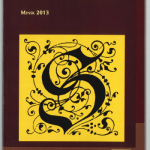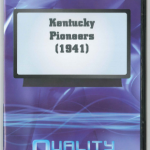American contributions to the 15th International Congress of Slavists : Minsk, August 2013 / edited by David M. Bethea & Christina Y. Bethin. (OCLC #869343313)
In RDA records, I follow the capitalization rules in RDA Appendix A:
American is the first word of the title, so it is capitalized. It is also an adjective derived from the name of a people, so it is would be capitalized (by RDA A.12) even if it were not the first word.
International Congress of Slavists is a specific corporate body (a meeting held every 15 years), so it is capitalized by RDA A.16.5 (Names of Corporate Bodies). The phrase “international congress” on its own would not be capitalized.
Minsk is a city, so it is capitalized by RDA A.13.2 (Political Divisions). The word “city” on its own would not be capitalized.
August is a month, so it is capitalized by RDA A.21 (Names of Calendar Divisions). A season like “winter” would not be capitalized.




